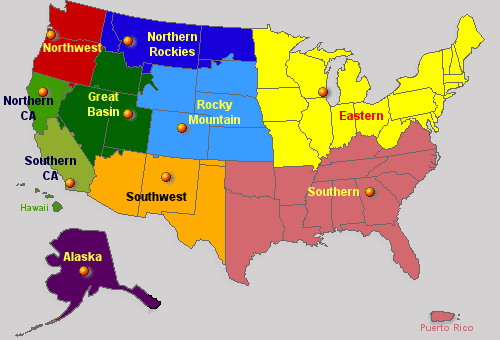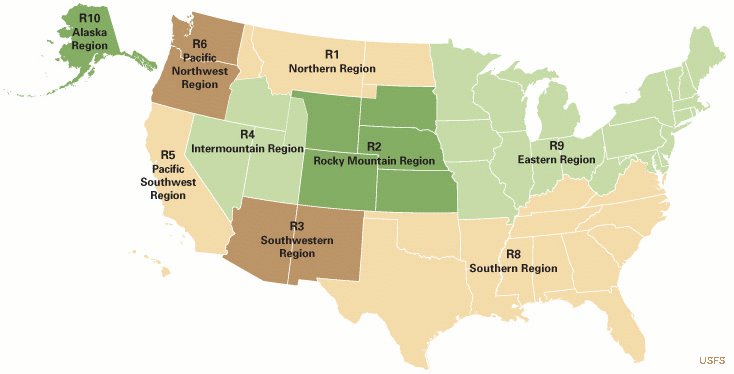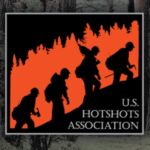What is Hotshotting All About?
Hotshotting is Wildland Fire Management work—Suppression and Prescription—at a high level, for an extended fire season, as part of a team of 20 individuals that becomes, through advanced training and deep experience, a tight-knit and elite module with broad and diverse applicability on both Initial Attack and Campaign Fires.
But Hotshotting itself is much more than that. Hotshotting is work that becomes a way of life. Hotshotting is spending a hundred plus days on assignment over a six month fire season. Hotshotting is working 1000 hours of overtime on top of 40 hours/wk of base pay. Hotshotting is sleeping in the dirt, travelling the country, working hard in the forests, fields, mountains and deserts of the United States; Hotshotting is finding breathtaking places—by foot, tire, fixed wing, helicopter, and other vehicles—that you would never have had any other reason in the world to set foot on, while protecting values and resources at risk. Hotshotting is Fire Suppression in the most rugged country, on the most complex Division, with the most extreme fire behavior. Being a Hotshot is about trusting the 19 men and women in line with you, knowing your skill-set and your training, about being confident in your safety and situational awareness no matter what the environment or context. Being a Hotshot is about believing in your Superintendent’s judgement and having faith in your Captains’ decision-making. Hotshotting is getting a nickname (or three): it’s about personal growth, about knowing yourself and your crew-mates through hard, rewarding work. Hotshotting is about Family: about a Family with history, tradition, and standards, that you’ll be part of forever.
Become a Hotshot
The path to becoming a Hotshot can vary, but it typically includes experience as a Type-2 Firefighter on a Fire Engine Module, Type 2 Handcrew, Fire Use Module, or Helitack Crew with one of the Federal land management agencies (such as the U.S. Forest Service, Bureau of Land Management, or National Park Service). Additionally, individuals from contract fire crews, as well as state and local-level fire management agencies, have become Hotshots. The application process for Federal Hotshot employment typically goes through USAJOBS.com, but direct contact with your chosen Hotshot Crew’s leadership—by phone, email, and particularly in-person visit—is very beneficial, and often essential. Make sure to read up on the difference between a Federal resume and a one-page resume, reach out to people who have been on Hotshot crews for advice, and watch our News and Events pages (as well as our various social media accounts) for additional information.
A primary prerequisite to Hotshot eligibility is a high level of physical fitness. Hotshot crews do rigorous PT (Physical Training) daily, and physical fitness and stamina are among the base requirements for an entry-level Hotshot. But it’s not the only essential quality. Attitude and temperament are also key attributes, and particularly important as a Crew grows and evolves as a long fire season progresses.
Interagency Hotshot Crew (IHC) Map
Click on the IHC icons to view Crew logos, duty station location, and contact information.
The continental United States and Alaska are divided into 11 Geographic Areas for the purpose of incident management and mobilization of resources. Hotshot Crews are associated with geographical areas, regardless of agency, and the icons above are color coded accordingly.

In addition, the US Forest Service is divided into nine separate regions (shown below) and hiring often occurs by region. The US Bureau of Land Management is divided by state, whereas the US Bureau of Indian Affairs crews are associated with tribal agencies.

Hotshot History
“Hot Shot” is thought to have appeared in literature as early as 1593, and has a colorful history of meaning, running the gamut from “one who shoots recklessly” (essentially, a “hotheaded fellow”), to the quite literal Naval use of “hot-shots,” which were iron shot heated red-hot in a furnace before being fired into the side of a wooden ship. Among our favorite early uses of “Hot Shot” comes from 1604, when Thomas Middleton wrote
“To the warres I betooke me, ranckt my selfe amongst desperate Hot-shots.”
Another source on how the name “Hotshots” may have come to us; Walt Sniegowski (Dalton Hotshots ’64) recalls a conversation with Mt. Baldy District Ranger, Anselmo Lewis. Rather than a conversation it was more of a history lesson given on Selmo’s porch at Dalton Station. This was the time period when fire crews were required to remain on “Standby” after regular working hours. Standby pay was calculated at 25% of your base pay. I was earning about 50 cents an hour.
Selmo believed that the name “Hotshot” originated from a very popular comic strip entitled “Terry and the Pirates” drawn by Milton Caniff. Caniff was intensely patriotic and in the original strip, Terry joins the U.S. Armed Forces and is based in China with the 1st Air Commando Group. Joining Terry in the comic strip were characters named “The Dragon Lady”, “Connie the Coolie” and a devil-may-care individual who provides comic relief…. ”Hotshot Charlie”!
The first use of Hotshot in Wildland Firefighting history was for a crew of two or more persons that fought fire with hand tools. Today, Hotshot as an adjective is sometimes used in common parlance to refer to pilots, stockbrokers, and lawyers (among others); as a noun it also defines an express freight train. In the world of Wildland Firefighting, the term is an identifier for a highly skilled group of men and women that form a Type 1 Handcrew, or IHC: Interagency Hotshot Crew.
In 1910, massive and catastrophic fires decimated the Northern Rockies and pushed the then-fledgling US Forest Service to its breaking-point. This catalyzed much hard work and extensive research, pouring resources into the evolution of fire suppression: research which directly influenced the early formation of Hotshot hand-crews. In 1910, the Forest Service Chief issued a bulletin stating: “The following are of 1st importance: 1) Quick arrival at the fire; 2) an adequate force; 3) proper equipment; 4) a thorough organization of the fighting crews; and 5) skill in attacking and fighting fires.”
The Forest Service developed Hotshot crews specifically to fight forest fires in the West’s rugged terrain. After a 1935 decision, the “10am Rule” to control all fires the morning following their first report became national policy.
By 1946 to 1950, five Southern California fire crews, based on the San Bernardino, Cleveland, Angeles and Los Padres National Forest, were the first to use the title “Hot Shot.” These were the Del Rosa, Laguna, Chilao (disbanded in 1984) , Oak Grove (disbanded in 1978) and Los Prietos (now Los Padres) Hotshots, respectively. The early formation of the “Hotshot” program was informal and self-proclaimed, and many of the early crews had an extensive history in the CCC and other programs, reaching back into the thirties and forties.
Today, Interagency Hotshot Crews (IHCs) form the backbone of Federal Land Management Agencies’ response to wildland fires. Since the early days, Hotshot Crews have evolved through different formats and numbers to solidify as twenty-person teams, and are among the most efficient and effective providers of service in wildland fire suppression and management.
Reference the many historical articles and interviews found in the “Hotshot History in America.” For more history and context, read about each individual Hotshot Crew Histories and the agency documents found in the Hotshot History in America document. Among our favorites are: Adapting Advanced Principles of Organized and Fire-Line Construction To CCC Suppression Crews; Fire Warriors; “Hot Shot” Crews; Interagency Fire Suppression Crew; Oregon’s “Red Hats”; The 40-Man Crew; and Where Did We Get Our Hotshot Crews?
Interviews: Read the many interviews with the fathers and grandfathers of our Hotshot history like Lynn Biddison, Joe Tsabetsaye, Doug Campbell, Don Biedebach, Chuck Wolfe, and Ben Charley, to name just a few.
Updated version of the Hotshot Crew History booklet.Click Here For 2017 Edition For The IHC history
Hotshot Galleries
Hotshot crews tend to find themselves in some of America’s most beautiful places, first-hand witness to and active participant in one of nature’s most dramatic events: Wildfire. Hotshots themselves have a tendency to documentation and storytelling, capturing the experience of their unique life, their specific work, their family of friends and coworkers, and the spectacle of wildand fire on scales both massive and intimate. Check out our curated selection of the vast collection of Photography and Video from the Hotshot Community.
Join the U.S. Hotshots Association
Help Preserve Our Past and Pay It Forward by becoming a member today.
[simple-social-share]



